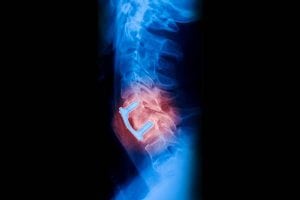 There are many types of spinal surgery to treat a wide range of spinal issues. Although conservative care methods may be attempted first, there are minimally invasive approaches to many spinal surgical procedures that can minimize pain, risks, and recovery time.
There are many types of spinal surgery to treat a wide range of spinal issues. Although conservative care methods may be attempted first, there are minimally invasive approaches to many spinal surgical procedures that can minimize pain, risks, and recovery time.
Some of the most frequently performed spinal surgeries include:

- Lumbar discectomy – The removal of part of a ruptured or herniated disc
- Cervical discectomy fusion – The treatment of a nerve root or spinal cord compression caused by disc herniation
- Lumbar interbody fusion – The fusion of part of the spine to treat back pain and spinal instability
- Artificial disc replacement (arthroplasty) – The placement of prosthetic devices that mimic spinal discs in order to increase stability and range of motion
- Discectomy (decompression) – Removes pressure on the spinal cord and nerves by removing damaged discs
- Cervical laminoplasty – Decompresses spinal pressure by hinging a side of the posterior vertebrae elements and then cutting the other side. This creates a type of door that is secured in place to allow for increased mobility
- Laminotomy – Removal of part of the lamina (bone that forms part of the vertebral arch) to create an opening, such as for a pinched nerve
- Laminectomy – Complete removal of the lamina for treatment of herniated discs, sciatica, and spinal stenosis




